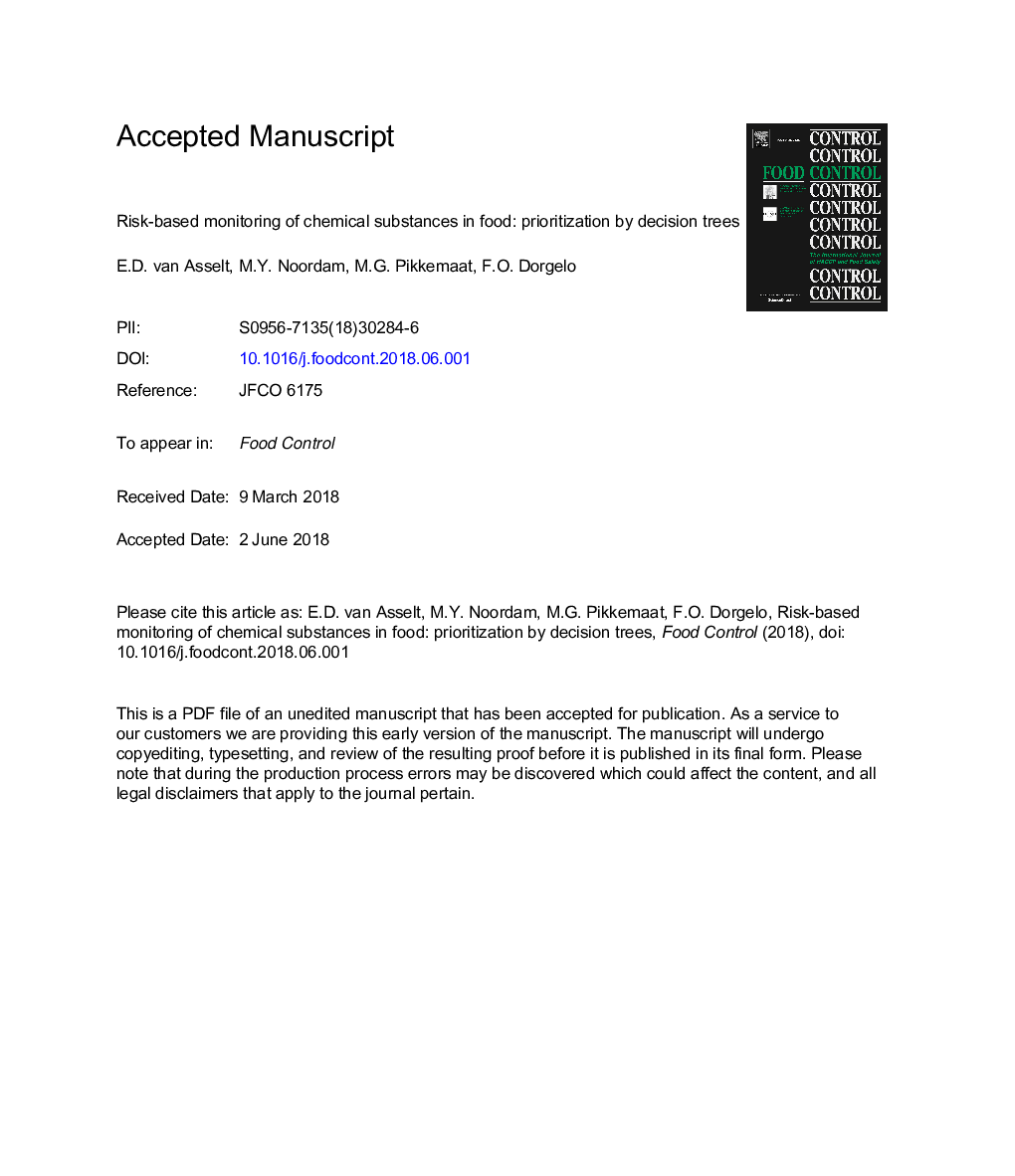| Article ID | Journal | Published Year | Pages | File Type |
|---|---|---|---|---|
| 8887717 | Food Control | 2018 | 38 Pages |
Abstract
Monitoring programs for food safety hazards are increasingly set up on a risk basis. In order to include the most relevant chemical substances for food products within such a program, a prioritization is needed. Within this research, decision trees were developed to rank chemical substances that may occur in food products. The decision trees focus on red meat, but can also be applied for other animal products. Three decision trees were developed, one for each of the following groups of chemical substances: prohibited substances, environmental contaminants and authorized substances. The decision trees focused on human health risks including the occurrence of a chemical substance and the human health effects. Substances are subsequently classified into high, medium and low priority for monitoring. The decision trees were tested with a selection of chemical substances for each of the three groups of chemical substances. Scientific information (such as EFSA opinions) and (national) monitoring data were used to answer the questions in the decision trees. Results showed that the developed decision trees are helpful in classifying chemical substances and as such can be used as a tool to set up risk based monitoring plans. It is recommended to establish a working group containing a broad range of experts to prioritize the substances and to re-evaluate the list of prioritized substances frequently using the most current (monitoring) information.
Related Topics
Life Sciences
Agricultural and Biological Sciences
Food Science
Authors
E.D. van Asselt, M.Y. Noordam, M.G. Pikkemaat, F.O. Dorgelo,
